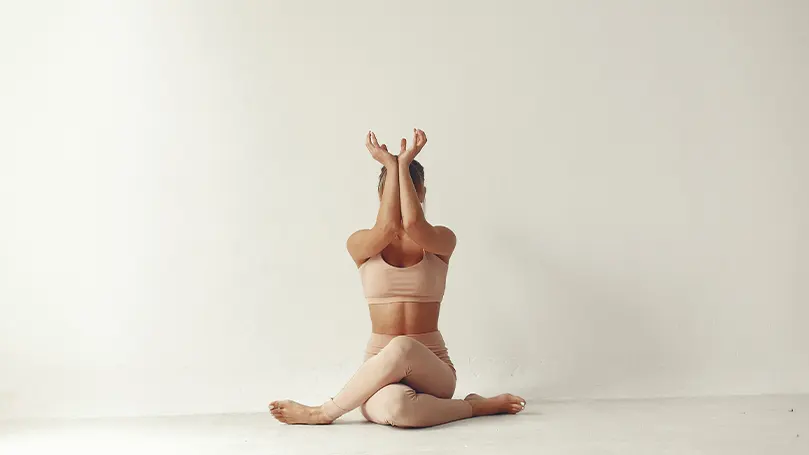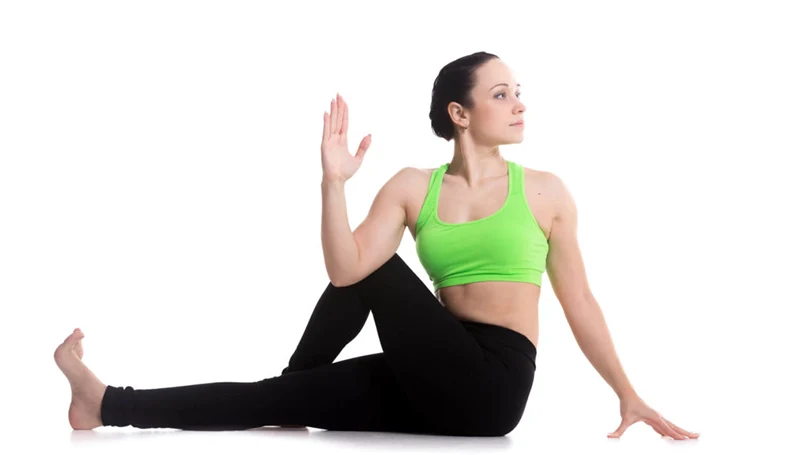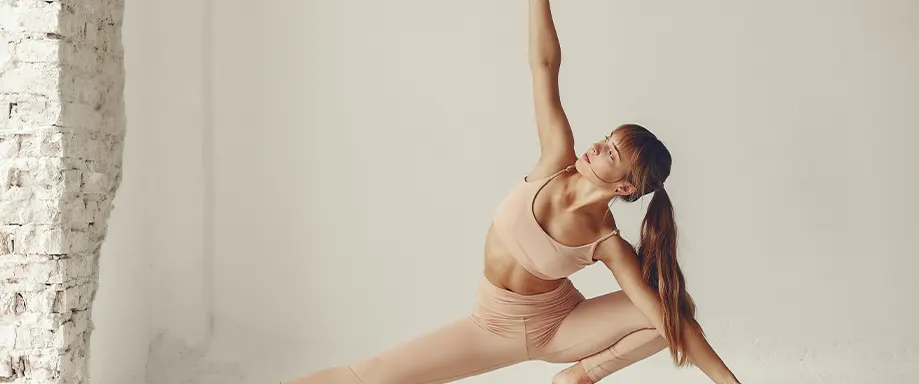A brief history of yoga
Understanding yoga from a historical standpoint makes us realise how it got to the point it is in today. It was influenced by numerous cultures and philosophies throughout the millennia. Yoga originated in India without a clear source as to when exactly it came to be. Historians claim that the Indus Sarasvati civilization practised it first about 5000 years ago. Others claim it is old as 10,000 years but that is far from relevant for our story.
Yoga branched out from its original cradle by combining various beliefs, ideas and techniques. The widespread effect yoga had on the Indian Subcontinent was culturally impactful. This ushered in the first written compendium that introduced the reader to Taja Yoga (classical yoga).

A couple of centuries later, yoga practitioners removed the religious aspect of the craft inspired by Vedas (Holy Scriptures of Hinduism). The goal of this change was to focus on two very important things at that time (at any time to be fair) – rejuvenating the body and extending life. This is the core objective of Tantra Yoga that resulted from that split.
During the 20th and early 21st century yoga started to emerge in the West due to the travelling masters. This is when yoga started to slowly apply itself to the western way of life. The transformation was rapid and well accepted – yoga is considered a global thing in today’s world, enjoyed by all.
Why is yoga beneficial for sleep?
Physical movement, as well as regulation and control of breathing, reduce the risk of cardiovascular diseases. Yoga emphasizes the activation of the main nerve that directs the parasympathetic nervous system. It is part of the system responsible for lowering the heart rate and relaxation. However, you can use this ancient practice to regulate other processes in the body, according to the World Health Organization.
Regular physical activity
Nowadays, physical inactivity is a main factor that jeopardises our well-being. Many positions in yoga require the use of your own body weight. This type of exercise strengthens the hands and alleviates the symptoms of osteoporosis. To keep your bone density under control, you need to influence your cortisol levels. It helps retain calcium in the bones.
The relaxation exercises you learn in yoga contribute to better blood circulation throughout the body, especially in your legs and arms. Regular exercise improves balance and prevents falls and knee and back pain. For the elderly, this means independence and independent movement.
Weight loss
Some sports help us to be stronger, while others increase our bodies' mobility. However, we can only increase strength, mobility, and flexibility with specific training methods like yoga. It makes ligaments and connective tissues more vital and flexible and strengthens our body. Constant and dedicated yoga practice restores the disturbed hormonal balance in the body and normalizes body weight. Practice yoga to reduce stress and anxiety and thus protect yourself from overeating resulting in unpleasant feelings.
Improves breathing
Although the process involves fewer breaths, you increase your lung capacity by breathing through your nose. This organ filters the air, moistens it and removes dirt and other impurities you would otherwise take. Better oxygenation of the entire organism expands the lungs and allows you to control your body during exercise better. Yogic postures can help you activate the air cells and strengthen your lungs. It involves abdominal, thoracic, and clavicular breathing, which helps to gain control of your breath, correct bad breathing habits and increase your oxygen intake.

Better mental health
Performing yoga positions moves the body and facilitates faster food and waste products transport through the intestines. In this way, it prevents constipation. It also stimulates the heart, which supplies the muscles and organs with oxygen-rich blood, which reduces fatigue.
Considering that a digestive tract problem and fatigue can trigger nervousness, practising this relaxation technique reduces the chances of their occurrence. It helps us relieve nervous tension and stress levels by influencing cortisol secretion. Combined with other stress relief methods, it can be a powerful way to keep anxiety under control.
Tips for practicing yoga to improve sleep
Do you have any evening rituals that relax you before bed? This does not include using the phone and browsing social networks. Instead of these aimless actions, do relaxing exercises. We suggest breathing exercises and meditation to help you prepare for sleep. Your brain requires a relaxing activity that will signal that it's time to sleep.
Light breathing and stretching before bed also lower blood pressure, and promotes circulation and weight loss. Of course, it takes time to get used to it. So try to complete your ritual, get the right equipment and adapt the room's conditions to the exercises.
Choose one of the relaxing types of yoga
One of the main advantages of yoga is that there are different yoga poses and yoga postures for everyone. What type of yoga suits you best? Different types suit specific age groups and mobility levels. Anyone who practices it can develop their style.
Yoga teachers also develop some of their styles by combining different types. The Iyengar style is excellent for beginners. It is slow and focused on the details of posture according to the principle of correct geometry in each pose. If you are more interested in a traditional style with a series of high-energy poses and movements, then Ashtanga yoga is for you.

The most popular among athletes is Power Yoga. It is focused on developing upper body strength, flexibility, and balance. Bikram yoga is recommended for easier release of toxins; Bikram yoga is a favourite for anyone who likes to sweat. It stands out in a warm room and assumes longer poses.
Among the basic types, we also include Kundalini, which represents a more spiritual and philosophical approach. It is designed to awaken the kundalini energy in the spine, which awakens sexual energy. If you are a beginner, try Hatha yoga. It can be adapted to each individual's physical needs, goals, and limitations.
Do it at least 45 minutes before going to bed
Under the influence of modern life, we are constantly under stress due to various tasks that we need to do. A lot depends on us – our family, work, and friends. Exercise is one way to balance all these forms of health. In order to minimize stress, you need regular physical and spiritual discharge.
Connecting with yourself, your environment, and nature is the essence of yoga and a recipe for a balanced life. That's why you should celebrate this ancient method more often, preferably every night before bed. It helps you adopt healthy lifestyle habits, improve your cognitive abilities and think more clearly. In this way, you get rid of anxious thoughts that sabotage the establishment of sleep.
Use essential oils
The atmosphere of the room is important too. Its characteristics should be compatible with the main goals of yoga. For example, the use of good essential oils contributes to the creation of a pleasant atmosphere.
Remember, it is necessary to eliminate potential usurpers such as noise, extreme temperatures, or unpleasant odours. Physical movement, as well as regulation and control of breathing, reduce the risk of cardiovascular diseases. The reason is the activation of the main nerve that directs the parasympathetic nervous system.
It is part of the system responsible for lowering the heart rate and relaxation. Certain oils like lavender will help you sleep better because they calm the nervous system. Therefore, replace the bedside table full of sleeping pills with natural products. Research has shown that many of them affect self-confidence, prevent constipation and contribute to better concentration.
Exercises for slumber
The benefits of yoga nurture the body and mind. Relaxing in such a manner improves upon both the physical comfort and mental calmness. Experimenting with positions is necessary for finding the right ones that work for you. The most commonly used positions are:
Easy forward bend (Sukhasana)
This position is beginner-friendly (as the name suggests) and great for stretching and calming your body down before a bedtime rest. The position is even more relaxing by sitting on a pillow for extra comfort.

Child's pose (Balasana)
The bread and butter of most yoga classes. This pose hits the essential notes necessary for complete comfort. The torso should be folded over the legs while arms are extended and the forehead is resting on the ground. Long breaths and turning the forehead left to right at brow point maximize the effect of this position.

Legs up the wall pose (Viparita Karani)
This pose restores circulation to the torso area by transferring blood from the legs. The name is pretty much self-explanatory. Closing your eyes and spreading arms improves upon the relaxation and stress relief. The recommended time for remaining in this pose is 1-5 minutes. Don’t remain in this pose for too long as your legs might start feeling numb due to the blood transfer.

Supine spinal twist (Supta Matsyendrasana)
This can without much of a stretch be performed in bed before going to sleep. Rests on your back and bring the right knee into your chest and after that over your left side. Extend the right arm out and look towards it, taking a few full breaths and after that repeat on the opposite side. Your legs can be slightly lifted together opposite of the arm you are extending – completing the full spinal twist.

Corpse pose (Savasana)
Achieving the state of sleep is troublesome for a lot of people. This very simple pose is pretty much what it says. Resting your legs and arms in alignment with your torso switches the focus towards breathing, similar to meditation. Great for easing stress and restlessness – this pose is will help with issues when falling asleep.

Conclusion
Yoga certainly has a great deal of advantages with regards to sleep time. It can help support your digestion, diminish pressure, treat insomnia-related problems, and it can enable you to soothe some of those strained muscles. You can do it whenever amid the day to turn stress into comfort. We recommend beginning simple on the off chance that you are a novice and working your way up to the harder poses. Keep in mind, even though the poses seem easy to do – the benefits they provide are quite noticeable.















There are no comments yet
"*" indicates required fields